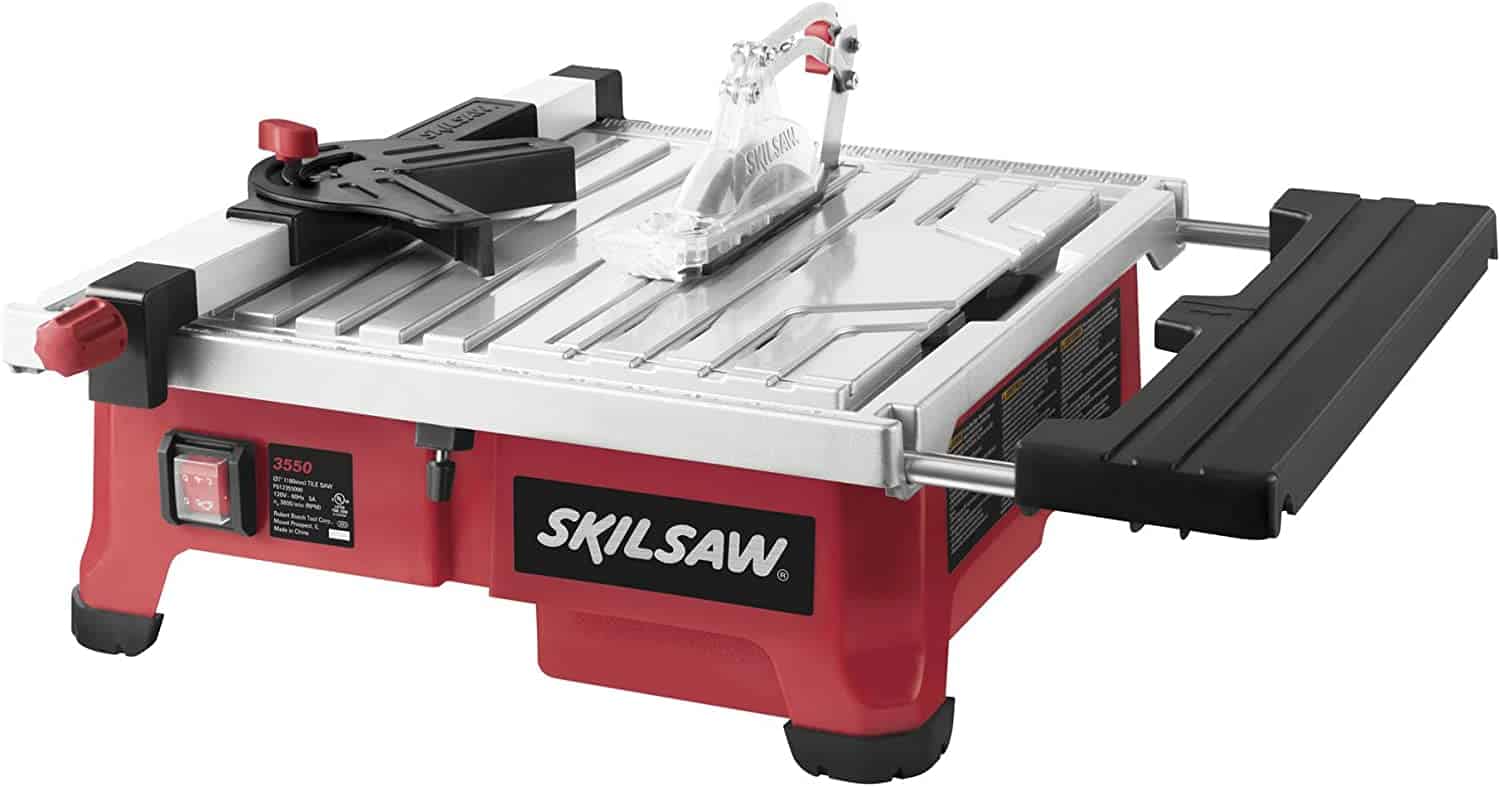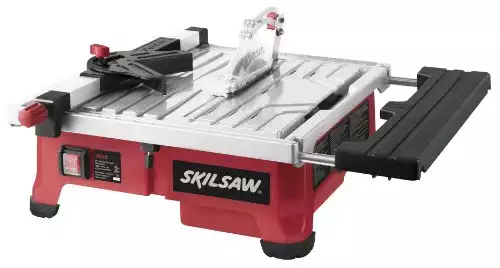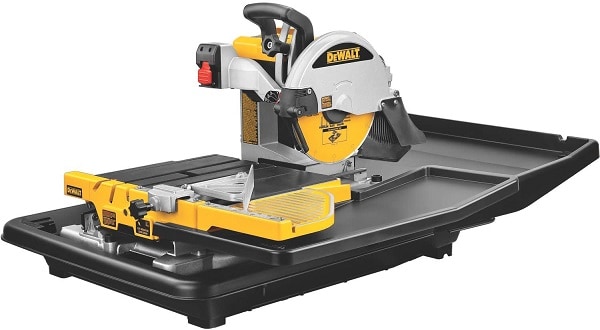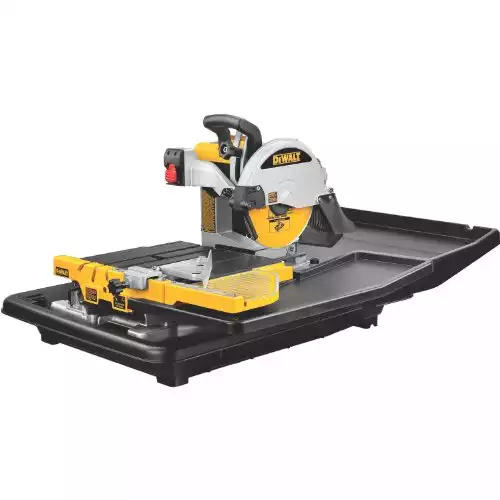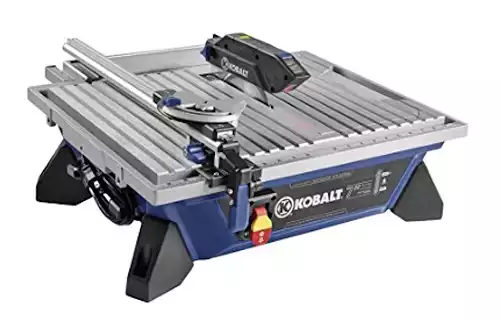- When is the Best Time of Year to Buy Flooring - June 19, 2022
- Reciprocating Saw vs Jigsaw: Which is Best for the Job? - June 14, 2022
- The Best Dado Blades – What Should You Look For & Best Options! - August 6, 2021
A wet tile saw may seem like an ordinary tool for home improvement, but for Logan Michelle William, it’s her best option for saving coral.
In charge of coordinating educational outreach at Coral World, a marine park located in the US Virgin Islands, Williams spends her days trying to raise awareness for the depletion of coral reefs but also trying to do everything in her power to save them, or at least slowdown destruction.
It was a single marine biology class when she was in her final year of high school that led her to study and eventually engage in outreach efforts for coral reef help. A dive showcased how much the coral reef was deteriorating, and stirred a passion in her to do something about it.
Perhaps one of the greatest challenges coral reefs around the world are facing have to do with changes in climate, but the coral reef situated at St. John was hit particularly hard by Hurricanes Irma and Maria, which cost a collective almost one hundred and seventy billion dollars of damage worldwide in 2017, and harmed natural environments, including coral reefs.
But now there are signs that much of that damage is on its way to recovering.
And much of that, incredibly, has been accomplished with a wet saw. People like Ms. Williams use a process called micro-fragmentation as an innovative way to restore broken or damaged coral. It’s a painstaking process, one that involves breaking coral into minute pieces–normally with a wet tile saw–and allowing them to grow in tanks of carefully aerated water.
This allows new coral to grow more quickly, unhindered by risks posed by the larger environment. And without a wet saw, cutting into coral would be onerous.
Of course, a wet tile saw, incredible a tool as it is, is used most often for home improvement projects. But how do you find the best version of this power-tool, and what can you use it for?
What Is a Wet Tile Saw?
First things first: what even is a wet tile saw? A wet tile saw is a special power tool equipped with a special blade, normally diamond-shaped, that has been water-cooled, and, as the name implies, is specifically meant to cut into tile.
The blade itself does not have edges, or ‘teeth’ like other saws do. Instead, it’s rounded and smooth, which is useful when you’re cutting into materials that can break or need to be cut with a greater level of precision.
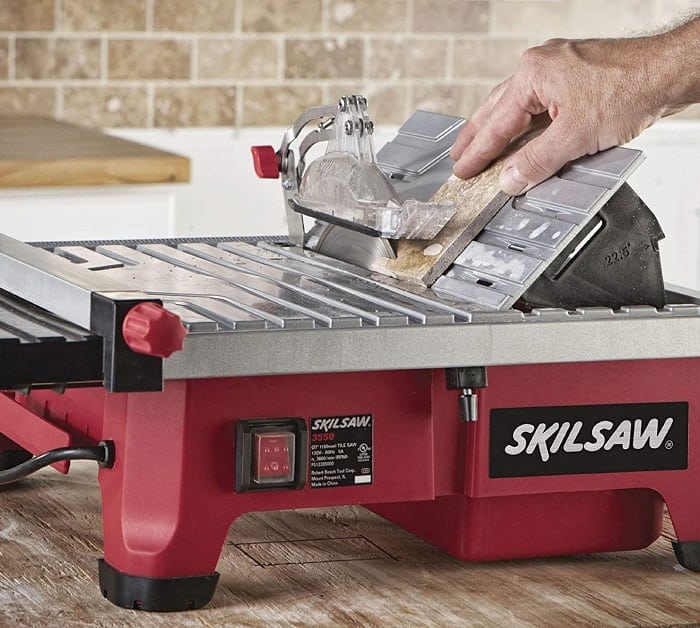
What are wet tile saws used for?
Wet tile saws are exceptionally helpful for several home renovations, most notably in kitchen renovations and also bathrooms. Tile replacement is the most common use for wet tile saws. Kitchen counters or backsplashes and floors are the most common uses for wet tile cutters.
How Do I Cut Tile Properly?
If you want to renovate your bathroom or kitchen but have a tighter budget, using your own tile cutter wet tile saw is a way to cut back on your costs. Professional work of this nature can cost quite a bit. But as a note of caution: you do need to understand how to cut tile properly. Otherwise, you risk racking up more expenses.
Luckily, cutting tile does take some planning, but it is possible to do.
The first thing you need to do is get measurements of your space and calculate how many tiles you’ll need.

For ceramic tile, you’ll need to mark the top, glazed side of the tile before cutting. You also need to make sure you smooth out the edges after you cut, often with a rubbing stone. For a shower, which is among the hardest tile jobs, you’ll also have to worry about selecting proper caulking.
Always make sure you have proper eye protection and other safety gear.
What is Water Cooling?
We mentioned that the blade is water-cooled, but what does that even mean? Water cooling is actually used for a variety of home improvement tools, but also other devices such as industrial equipment and even computer processors.
In laymen’s terms, water cooling removes heat through evaporation. Water-cooled blades are created in order to prevent overheating from high capacity use, and can even help your blade last longer and work more efficiently.
What are the advantages of a water-cooled blade?
Water-cooled blades in west tile saws are especially helpful because the process of sawing generates high levels of heat, and that’s even truer when you’re cutting into hard material like tile.
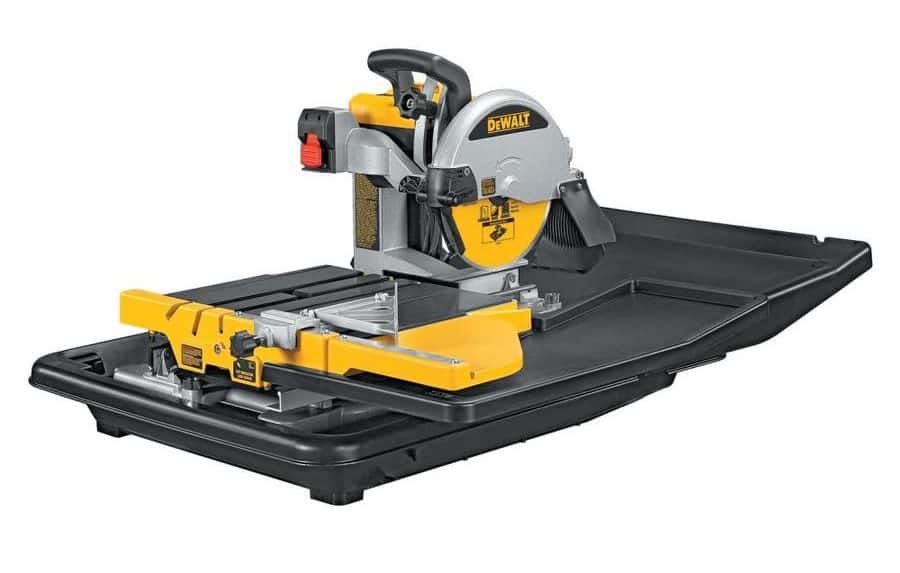
Coolants in general help reduce the heat that is generated during saw operation by absorbing heat. Without a water-cooled blade, saws can become overheated as they operate and decline in terms of overall performance.
Wet tile saws are equipped with water-cooled blades treated specifically so they can perform better on hard material. The risk of sawing into something like tile is that saws can overheat; poorer and less precise saws can risk chipping tile as they overheat and the sawing become less accurate.
To summarize, the main advantages to a water-cooled saw include
- Greater precision
- Longer blade life
- Reduces overheating
Why would I need a wet tile saw over a tile cutter? Both wet tile saws and tile cutters are useful when working with tile, but how do you know which power tool you need? Much of it has to do with the scale of the job, as well as personal preferences.
What Are The Advantages of a Wet Tile Saw vs a Tile Cutter and Vise Versa?
- Wet tile saws are more equipped for larger projects. Unlike tile cutters, which are manual, wet stile saws are electrically generated. As such, they will also, when used properly, work more quickly than tile cutters. Any exceptionally large rooms or complex room plans are better suited for wet tile saws over tile cutters.
- Wet tile saws are needed for harder materials. More powerful, they also are more efficient into cutting into especially hard materials. If you’re cutting into glass tile, you need a wet tile saw instead of a tile cutter.
- Wet tile saws are especially helpful for cutting straight. The rotating of the blade actually helps guide your cuts, so they come out consistent and straight.
- Tile cutters are more affordable and more versatile. Tile cutters are useful for a variety of small projects and cost less. They are most useful for replacing individual tiles or for a small space. By their nature, they are more tedious and take longer to use
- Tile cutters are portable. Wet tile saws can be a bit cumbersome due to their size, while tile cutters are lightweight and easy to transport.
- Tile cutters are less precise. Because tile cutters do not have a powered and rotating blade to guide the sawing, it’s more up to you to line tiles up with the cutter for a straight cut. In this way, although there is a learning curve to operating a power tool like a wet tile saw, in many ways a tile cutter requires more skill.
How Do I Find The Best Wet Tile Saw?
If you’ve decided that a wet tile saw is more suited to the task at hand, you need to be aware of key criteria that will ensure that you find the best wet tile saw possible. Let’s go over some key questions you need to ask yourself–and then we’ll offer some suggestions for specific tile saws.
Do I need to buy a wet tile saw?
You may think this question is repetitive when we’ve already discussed whether a wet tile saw or a tile cutter makes more sense for your project, but it’s actually not. With wet tile saws, sometimes you are able to rent rather than buy. Wet tile saws are not normally used many times. Chances are, you’re thinking of purchasing for one project, so it seems like renting may make the most sense.
Keep in mind, however, that renting costs an average of fifty to seventy dollars or more per day. In addition, if you do choose to rent a wet saw, you’ll have a time limit and have to worry about returning it.
Overall, you have to think of value — wet tile saws online retail for anywhere from about fifty dollars up to a few thousand. We’ll discuss price more in a minute, but for a mid-range model, it may be just as good of an investment to buy a wet tile saw. Think about how long your project will take; one day and rental may make sense, but beyond that and you may be better off just purchasing one.
Also, consider storage space. Wet tile saws can be quite large and difficult to store. If you’re short on storage space, renting may make more practical sense.
Finally, do you plan to use the wet tile saw more than once, possibly? If you do, the better value in some cases may be simply purchasing one.
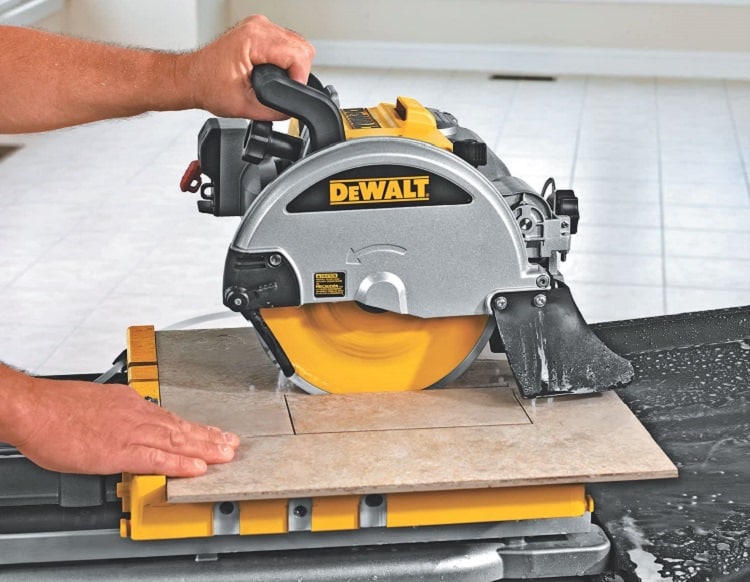
Do I want a recirculating pump or pumpless saw?
Wet tile saws are classified into two main types: those with a recirculating pump, and those that are pumpless. Re-circulating pumps use a water reservoir, where water is filtered through, whereas pumpless saws have to be attached to a hose or faucet.
While a recirculating pump is more convenient in some ways, pumpless saws also tend to be more lightweight and easy to transport; there also tend to be more options for wet tile saws that are pumpless.
If you don’t mind hooking it up to a faucet, you can also save money with a pumpless wet tile saw. In most cases, you’ll have a faucet available, though it’s up to you if you think a pump is worth the extra money.
How much should I spend?
As we mentioned, wet tile saws can get quite expensive if you’re buying, with some models exceeding two thousand dollars. How much you decide to spend depends on a few things: what features you want, the length of the project or how much you think you will use the saw again, and of course your own personal budget.
Our general recommendation is to stay above one hundred dollars because too far below that may signal cheaper materials and not as high of quality. But there’s no need to spend over one thousand dollars.
Shoot for a wet tile saw from one hundred and fifty dollars on the lower end, and up through eight hundred on the upper half. Before you decide on a model, consider all of the features and its overall value.
Do I need a containment system?
Yes. You need a wet tile saw with some form of water lock and containment system which keeps the saw safe to use and also helps with overall cleanup. A lock system allows you to use it worry-free and ensure that the saw is also performing at its best.
What about the tabletop?
The tabletop or the top of the surface of the wet tile saw, should be made out of a durable material that doesn’t rust or easily tarnish. For this, something like aluminum or stainless steel is your best option.
What about speed?
Speed is measured in terms of rotations per minute (rpm) and indicates how quickly the blade works. Faster is not always better. Keep in mind that the quicker a blade works, the harder it will generally be to control. That said, you a fast rpm does indicate a powerful motor and will cut back on time you spend on your renovations. A good speed range is around 2500 to 4800 RPM.
What about motor power?
One thing that’s very important to look at, arguably more so than speed, is motor power. Motor power will be measured in volts and indicates, of course, how powerful the motor is, but furthermore how efficiently it will be able to cut through the tile.
While wet tile saw tend to be more powerful than tile cutters in general, you need a powerful motor to cut through more difficult material, like glass. If not, you don’t need to spend extra money on the most powerful motor possible.
For regular ceramic tiles, you’re likely fine with a wet tile saw of about one hundred and twenty volts.
For more difficult tasks, look for motors around one hundred and fifty to one hundred and eighty volts.
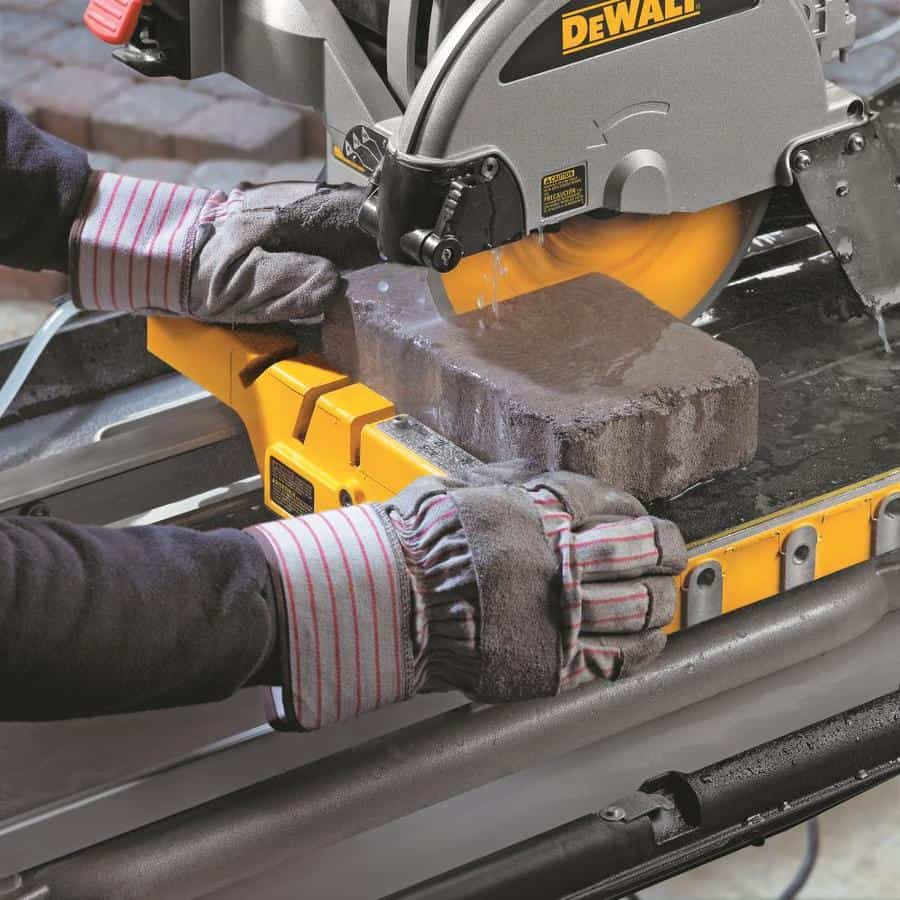
How deep will it cut?
If you’re cutting tiles, you also need to know the depth of cut possible. That is indicated by the absolute greatest thickness a blade is able to cut through, which is reflected by the blade’s diameter.
You don’t want to go too deep–ideally, you should match the blade’s diameter to not much more than the tile itself. So if you’re not cutting into very thick material, you want to go more a more modest diameter size, and vise Versa.
The average diameter of a blade is around eight to ten inches. A blade with an eight-inch diameter will cut through around two inches of material. Use this as a scale in terms of your project and what you will need.
What about cutting length?
Of course, you also want to know the cutting length of your wet tile saw. You can find that out by the diameter of your blade as well, though you need to worry about this aspect less. The average saw would run around up to ten inches to twelve inches. This, in some ways, is less important than depth.
Weight: You already know that a wet tile saw is going to weigh more than a regular tile cutter. With that in mind, while lightweight designs may be more practical in some ways and easier to maneuver, by the same token, they also tend to have less powerful motors and be made of less steady materials.
While you don’t have to go for the heaviest model, weight of twenty to thirty pounds is reasonable. For a lighter model, you can go a little below that, but not less than fifteen pounds. Two much heavier than thirty pounds for most renovations are not necessary and can prove cumbersome.
How do I get more control over my cuts?
Another key to finding the best wet saw is one that features something like an adjustable rip fence, equipped with a gauge. This allows you more options in terms of making different types of cuts but also helps guide your straight cuts.
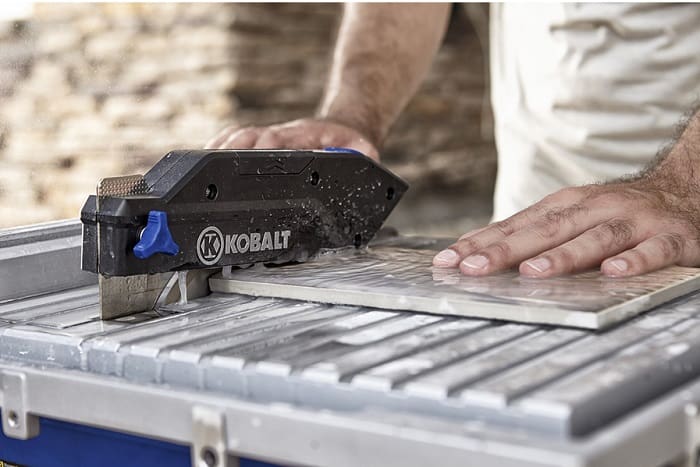
What about angled cuts?
While wet tile saws are best for straight cuts, to understand what degree of flexibility you’ll have, as well as if it’s a suitable saw for working in tighter spaces or with irregular cuts, take a look at the bevel cut capability, which should be marked in degrees. A wet tile saw with the capability of up to forty-five degrees is a good bet.
What about stands vs tabletop saws?
You’ll have two main options when it comes to how to use your wet tile saw–those that come with a stand and tabletop versions. Of course, you can buy some stands for tabletop options. If you have a working bench, a tabletop option is just fine. If you do opt for a wet tile saw with a stand, just keep in mind that you need to make sure that stand is steady enough and durable.
Is there anything else I should think about?
If you’ve decided that purchasing a wet tile saw is the best option for you, you’re always going to want to keep warranties in mind. Most of the best wet tile saws will at very least offer you a limited warranty against manufacturer issues and related concerns.
Check to see if there is a warranty, and make sure you read the fine print before purchasing. Last but not least, always consult customer reviews. While looking at external reviews and overall ratings is a good start, you can go further by investigating the reasons behind those ratings. You could even look up the company on a reputable site, like Consumer Affairs or the Better Business Bureau.
Recommendations for Best Wet Tile Saws?
The best wet tile saws have a table made of durable, non-corrosive material; have a reasonable motor and blade speed, and come with a warranty. But those general guidelines aside, here are our suggestions for best wet tile saws, no matter your project.
SKIL 3550-02 7-Inch Wet Tile Saw
The SKIL 3550-02 7-Inch Wet Tile Saw with HydroLock Water Containment System is a nice value wet saw, offering a number of great features at a price of around one hundred and fifty dollars. There’s a decent amount of flexibility, with bevel cuts at twenty-two and forty-five degrees and a blade speed of thirty-five hundred rotations per minute.
A hydrolock keeps your saw functioning to its best, while a sliding extension and adjustable rip fence provide the ultimate in flexibility. It’s a reasonable weight, at twenty-four pounds, and has a one hundred and twenty-volt motor.
Whether you're updating or renovating, adding tile to your kitchen or bathroom is now easier than ever with the SKIL 7-inch Wet Tile Saw (3550). The saw's innovative HydroLock System keeps water splash to a minimum so tiles can be cut in the room where they're being installed.
DEWALT D24000 Wet Tabletop Sliding Table Tile Saw
The DEWALT 10-in 1.5 Wet Tabletop Sliding Table Tile Saw is a more expensive wet tile saw (but still well under one thousand dollars) but suited for multiple uses or heavier tasks. From a company with a reputation of producing high-quality power tools, this wet tile saw features.
It has the ability to cut on diagonals on eighteen by eighteen-inch dimensions, as well as a rip cut of twenty-five to twenty-eight inches. An aluminum frame keeps the saw steady and aligned. This comes with a pump, which you can adjust.
It provides extension options, a milter guide, and an adjustable alignment for the most precise cuts. You can also make angled cuts up to forty-five degrees and there’s plenty of room for storage.
Whether you're a flooring specialist or a do-it-all remodeler, the DEWALT 10-Inch Wet Tile Saw delivers accurate and reliable performance to get the job done. This saw is able to rip tiles and can handle diagonal cuts. An integrated rail system helps ensure precision and an integrated miter feature allows for accurate bevel cuts.
Kobalt 7-in Wet Tabletop Tile Saw
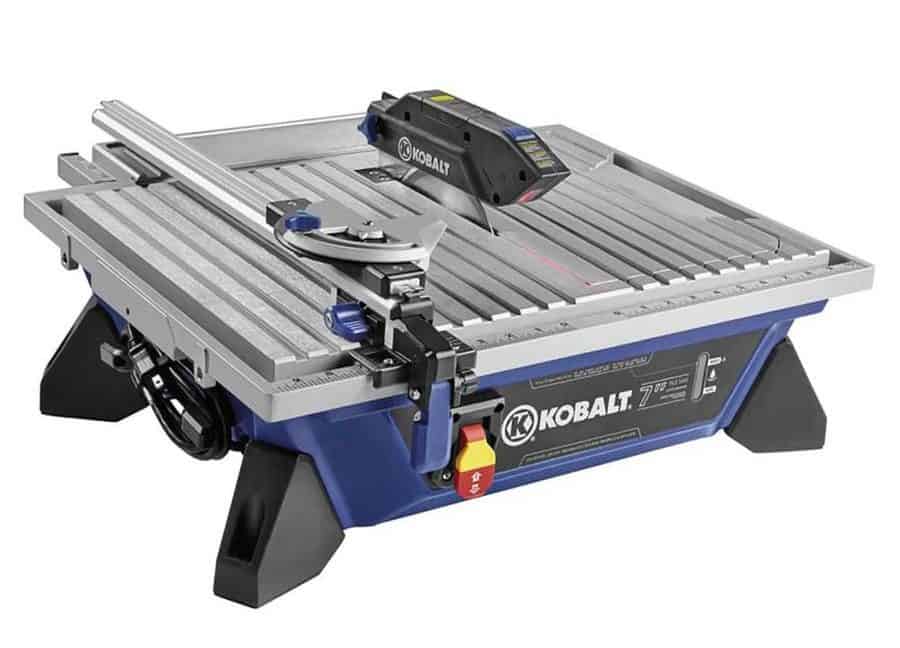
The Kobalt 7-in Wet Tabletop Tile Saw is one of the best values at its price point, with multiple useful features. The rip cut is up to eight inches, you can cut diagonally up to twelve inches, and it comes equipped with a 3.5 amp motor and a blade rotation speed of just under thirty-five hundred rotations per minute.
The extension is made out of durable aluminum, and there’s a built-in laser to help guide alignment (though this is sold separately). While it does not have all the bells and whistles of a more advanced wet tile saw, it gets the job done at all at a reasonable price.
Miter gauge slides for precise cuts up to 45, so you can begin at your desired angle without worrying about creeping during cuts Table tilts for accurate 22.5 and 45 bevel cuts Built-in laser guide provides precise alignment 20-in aluminum rip fence slides and locks securely to ensure accurate and clean cuts Includes 7-in blade and 2 AAA batteries for the laser Includes a 7-inch blade and 2 AAA batteries for the laser - an optional stand is sold separately,



